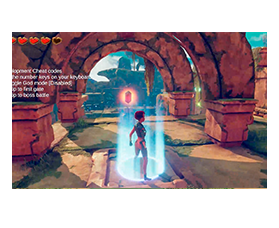Implementing audio in-eNgine, be it Unity, Unreal or a proprietary engine, provides it's own challenges,
and usually consists of implementing known solutions to recurring problems.
To facilitate this, companies like Firelight and Audiokinetic have created specialized software called 'Middleware'
§ In short
In Middleware 2 introduces you to Wwise, which is considered widely as the industry standard.
It's workflow accommodates large projects and focusses maintainability as the project scales up.
We start with an introduction to Wwise's specific workflow,
continuing to touch upon all needed steps to implement audio in an existing game project from scratch.
§ Course contents
Competency in Wwise's overall workflow, and features:
- Layout
- Events and Soundbanks
- Importing and editing sound assets
- Specific SFXObjects, such as Random and Sequence Containers
- Reacting to the game Dynamics using Game Syncs
- Reacting through Attenuation and Orientation
- Managing object's properties in groups using Share Sets
- Routing and Signal flow
- Mixing
- Optimization
§ Learning material
Wwise 101: https://www.audiokinetic.com/en/courses/wwise101/
§ Evaluation and assignments
We evaluate competence in
- Hooking into an application using events
- Utilizing Game Syncs to create a dynamic soundscape
- Using the Utility features such as the Soundcaster and Mixing Desks
- The final assignment combines all gained knowledge to implement audio elements in an existing.
§ Learning goals and outcomes
Graduates of this course are able to explore a game project where Wwise has been integrated
and implement a complete reactive soundscape, including dynamic ambiences,
context dependent interaction sounds, music and mixing.
§ Tools
Cockos Reaper, Wwise
Teacher(s):
This course is taught by our resident audio implementation wizard Dries Vienne
Contact: dries.vienne2@howest.be


